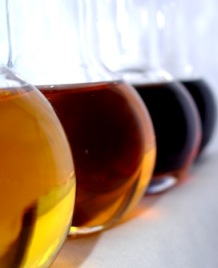Professional Cover Letters and Thank You Notes
Sunday, 13 September 2009 10:53Even though text-messages, email and casual attire sends the message that the world is a totally casual place, many “old school” business communication standards still thrive. Using these methods effectively will establish you as a proper professional. Crafting persuasive cover letters and courteous thank you notes will help set you apart as the right candidate for the job.

 It’s more than just a topping for pancakes.
It’s more than just a topping for pancakes.